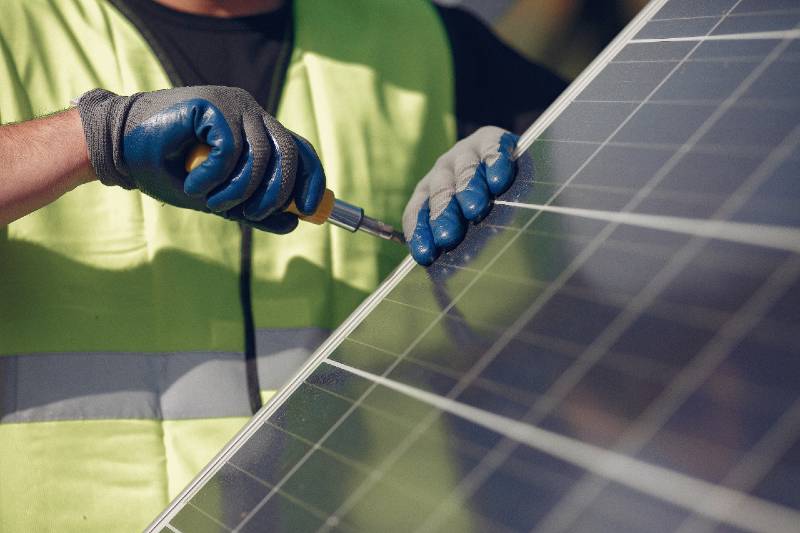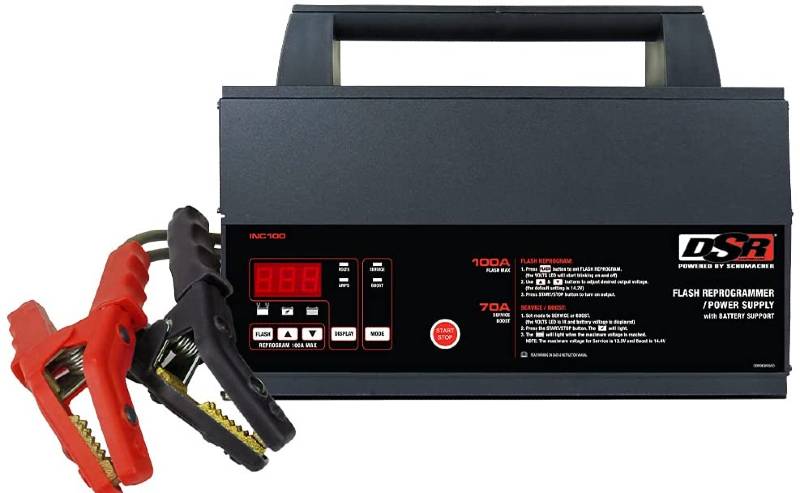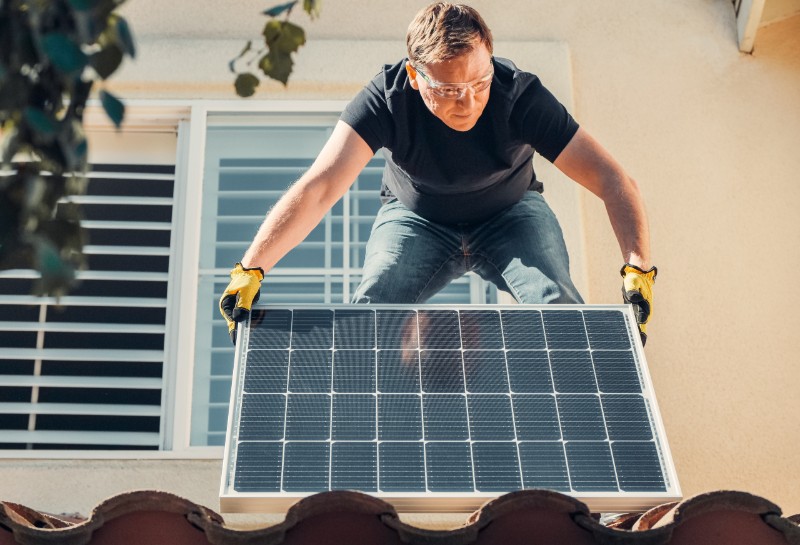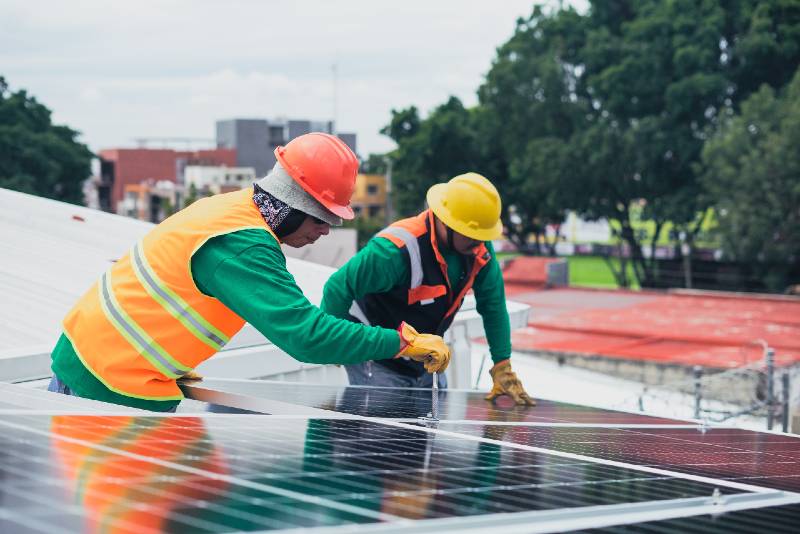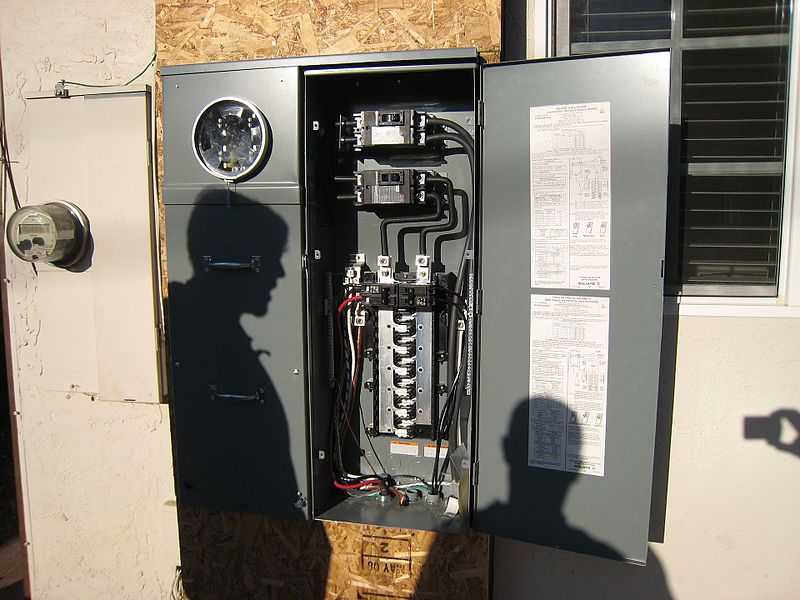On average, the American home can fit 96 solar panels on its roof.
However, determining how many solar panels can fit on your roof is harder than you might think.
It’s not as simple as dividing your roof’s surface area by the size of a solar panel.
There are many factors that you need to consider, including the solar panels’ size, mounting hardware, roof’s tilt & orientation, shading & sun exposure, and even your roof’s condition.
In this article, you’ll learn more about how can these factors impact the number of solar panels you can install on your roof, as well as how to determine the ideal number of panels for your home.
Key Takeaways
- The average American home can fit up to 96 solar panels on its roof.
- If you live in the northern hemisphere, installing solar panels on north-facing roofs doesn’t yield a lot of electricity, so it doesn’t make financial sense.
- It’s better to install solar panels on south-facing roofs for maximum sun exposure.
- The best tilt angle for solar panels is between 30 and 45 degrees.
- Shading can reduce your solar system output by up to 75%.
- Solar panels weigh 45 pounds on average and you must make sure your roof is in good condition to handle the extra weight.
What Affects the Number of Solar Panels You Can Fit on Your Roof?
1. Solar Panel Size
Solar panels are available in many different sizes ranging anywhere from 9ft² to over 30ft², depending on the wattage, brand, and model.
Obviously, the bigger the solar panel, the fewer you can fit on your roof, so we must know the size of each solar panel before we can determine how many we can install.
Right now, the average residential solar panel surface area is 17.6ft², so dividing your roof surface area by will give you a rough estimate of the maximum number of solar panels you can fit on your roof.
Maximum Number of Solar Panels (n) = Roof Area (ft²) / Solar Panel Surface Area (ft²)
So, if you have a 1,700ft² roof, you can fit approximately 96 solar panels, which is more than enough to run your home completely on solar power.
Keep in mind, however, that this is not a perfect calculation, as there are numerous other factors
2. Roof Orientation & Tilt
Solar panels produce the most amount of electricity when they are perpendicular to the sun.
This means that for people living in the northern hemisphere, the optimal orientation for solar panels is South at a 30-45 degree angle.
For people living in the southern hemisphere, the optimal orientation is North at a 26-degree angle.
Okay, so what does this mean for how many solar panels you can fit on your roof?
Well, 2 things actually.
First, installing solar panels on the north-facing part of your roof (if you live in the northern hemisphere) won’t produce a lot of electricity, so it doesn’t make financial sense to put solar panels there.
In other words, you lose about 30-50% of your roof’s available area.
Second, if you have a flat or a very steep roof, then you will need special mounting hardware to angle your solar panels so they can get maximum sun exposure, which will take up more roof space.
3. Shading & Obstacles
Did you know that shading can reduce your solar system output by 75%?
And I’m not talking about completely blocking your panels here.
Even just partial shading from tree branches, debris, or your own chimney can significantly reduce how much electricity your panels produce.
That’s why we avoid installing solar panels in areas that are prone to shading at all costs.
And this obviously, reduces how many solar panels you can fit on your roof.
Another thing to keep in mind is that we don’t install solar panels beyond the edge of the roof, as the wind load is too high there and can create enough torque to rip the panels off.
So you might lose a few square feet on the edges of your roof as well.
4. Roof Condition
Solar panels are heavier than you might think.
The average residential solar panel weighs about 42 pounds, and that’s just one!
So if your roof is old or weak, it can become stressed under the weight of a solar panel and its mounting system.
This can cause the shingles to come loose, the sheathing to break, and the structural integrity of your home to be compromised.
That’s why before installing solar panels, we always check your roof’s condition to make sure it can support the extra weight and last for the life of your solar system.
So if you have a weak roof, you might not be able to install as many solar panels as you’d like.
How Many Solar Panels Can You Fit on a Roof?
There is no way we can give you a definitive answer to this question, as there are many factors that come into play when determining how many solar panels a roof can support.
But we have some data that can help you get a rough estimate of the maximum number of solar panels you can install, how much power can they generate, and how many solar panels you actually need.
| Roof Size (ft²) | Maximum Number of Solar Panels |
|---|---|
| 500 | 28 |
| 1000 | 57 |
| 1500 | 85 |
| 1700 | 96 |
| 2000 | 113 |
| 2200 | 125 |
| 2500 | 142 |
| 2700 | 153 |
| 3000 | 170 |
How Much Power Can Solar Panels on Your Roof Generate?
| Roof Size (ft²) | Yearly Energy Production (kWh/Year) |
|---|---|
| 500 | 15,340 |
| 1000 | 31,228 |
| 1500 | 46,569 |
| 1700 | 52,596 |
| 2000 | 61,909 |
| 2200 | 68,484 |
| 2500 | 77,798 |
| 2700 | 83,824 |
| 3000 | 93,138 |
FAQs
Can You Install Too Many Solar Panels?
You can install too many solar panels on your roof. That’s why it’s always recommended to work with a reputable company that will install just the right amount of solar panels to offset your energy needs.
Is There a Limit to How Many Solar Panels You Can Have?
There is no limit to how many solar panels you can have but most of the time your utility company will limit the size of the solar system you can connect to the grid, which is usually between 10kW and 15kW solar systems.
Last Words
As you can see, there are a number of factors that determine how many solar panels you can fit on your roof.
If you’re interested in installing solar panels, it’s best to work with a reputable solar installer who can help you assess your roof and determine how many panels will be the right fit for your home.

